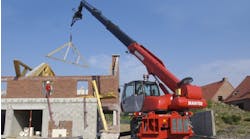“The construction industry has picked up the pace in recent months, after its lackluster performance at the start of 2003,”said Robert Murray, vice president of economic affairs for MHCD. “Single family housing continues to be the industry’s mainstay, and its strength should enable total construction to post a gain when the full year 2003 figures are in. The positive news in the October report is the improved activity shown by nonresidential building.”
Institutional structures were strong, with a 10 percent jump in school construction and 2 percent in healthcare facilities. Three large projects in the amusement category brought about an 86 percent leap in that area, and churches and public buildings went up 5 percent and 12 percent respectively. However, transportation and freight terminals dropped 34 percent.
Residential building, at $299.2 billion, dropped 1 percent in October, with a 1 percent gain for single-family housing but a 15 percent drop in multi-family housing. Nonbuilding construction dropped 5 percent to $91 billion, with a 76 percent drop in electric power plant construction.
For the first 10 months of 2003, the West and South Central U.S. were each up 6 percent; the South Atlantic and Midwest were each up 3 percent and the Northeast was down 10 percent.





